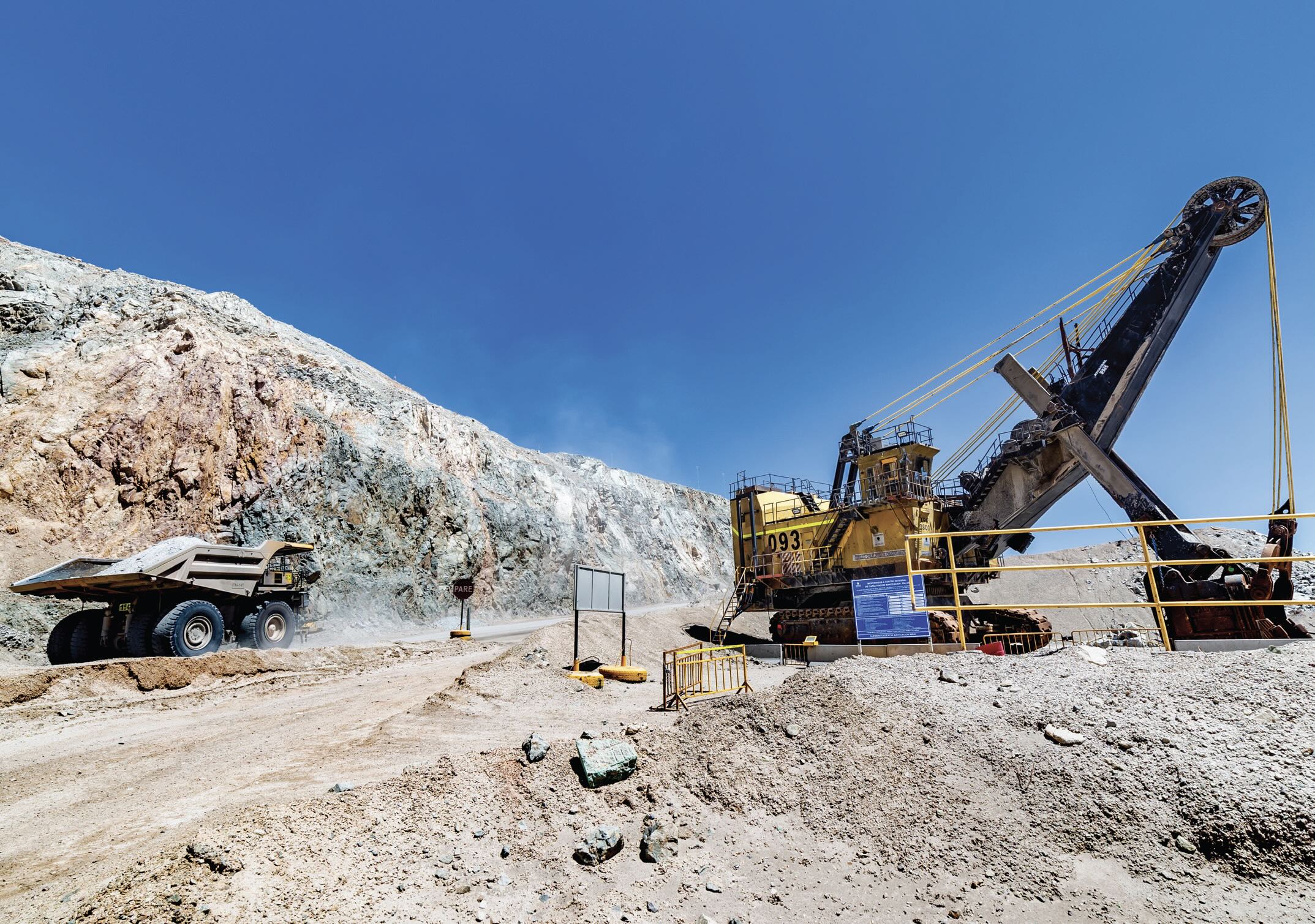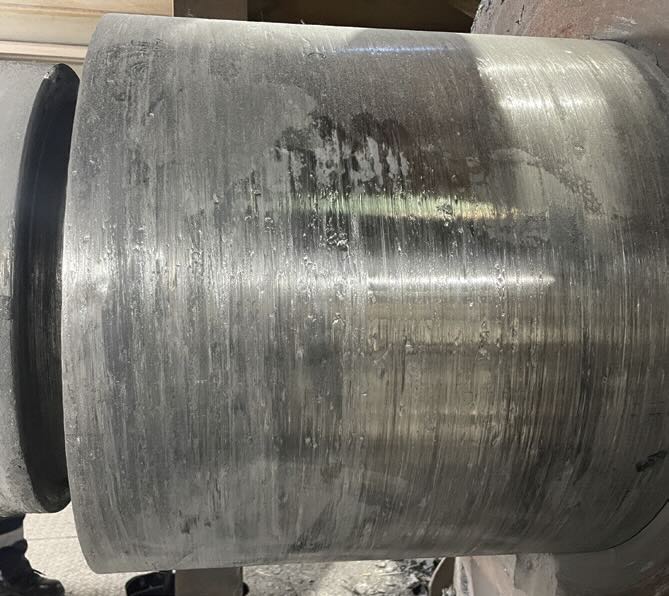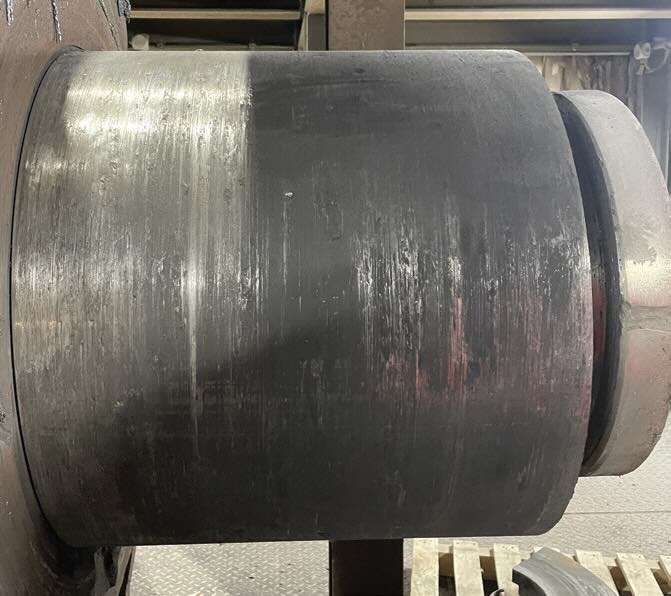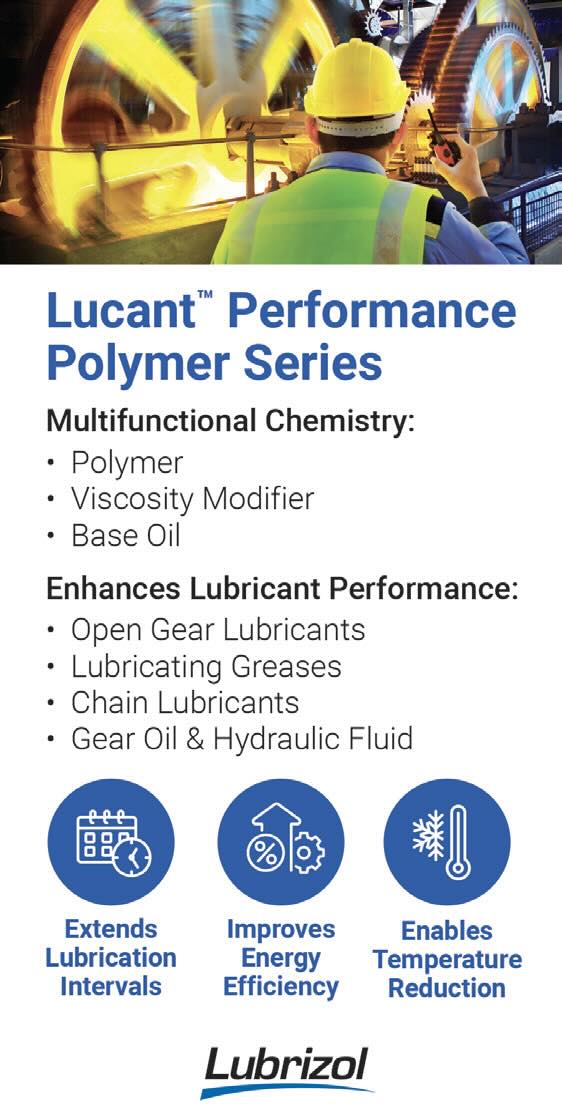The Lubrizol Corp.
The Right Open Gear Lubricant with the Right Additive Can Make a Huge Difference
By Dr. Jennifer Clark, Technology Development Manager at The Lubrizol Corporation | TLT CMF Plus November 2024
Lubrizol’s two-part approach to OGL solutions offers a range of compelling benefits.
The Evolution of Open Gear Lubricants
The development of open gear lubricants (OGLs) has progressed significantly in the last 70 years. Beginning in 1955, OGLs primarily consisted of asphalt, solid lubricant, and a solvent—a mix that would be sprayed directly onto gear surfaces. During operation, heat would evaporate the solvents and leave behind a black sticky coating that would ostensibly protect the gears. Chlorinated solvents were common but eventually banned for environmental reasons. These asphalt-based OGLs were used on all types of open gears in stationary and mobile equipment until the mid-1980s. As solvent use became more restrictive, OGLs were formulated with low flash base oils which posed several safety and handling issues as well as housekeeping issues. As equipment evolved through the 1990’s into the 2000’s, it became clear that different types of OGLs were needed for different applications.
In the 2000s, two types of OGLs emerged. The first, Type 1 or “grease-type” OGLs, are used primarily in mobile equipment like mining machinery. The second, Type 2 or “fluid-type” OGLs, are high-viscosity fluids for use in more stationary equipment:
•
Grease OGLs (Type 1) are designed for use within highly mobile operations with frequent changes, such as starts, stops and reversing direction. The operations typically lead to boundary lubrication scenarios in which surfaces are in contact under high loads. Boundary lubrication requires a lubrication barrier between contacting surfaces to protect gear surfaces. The best way to deliver protection in this scenario is via solid lubricants like molybdenum disulfide or graphite suspended in grease. The open nature of the gear configuration allows frequent visual inspection to replenish the OGL as needed.
•
Fluid OGLs (Type 2) are highly viscous and “sticky” lubricants designed for use in large, slow-moving stationary equipment with unidirectional and continuous movement. Initial startup of these gears involves some boundary lubrication, but quickly settles into a full-film or hydrodynamic lubrication scenario. In full-film or hydrodynamic lubrication, the lubricant coats and separates gear surfaces and protects from high temperatures. Ultimately, Type 2 lubricants must stay in place regardless of the environment or temperature.
The lubrication environment within stationary and mobile equipment is different. Both types of modern OGLs represent an acknowledgement of these differences in order to best protect gear surfaces and minimize costly downtime.
The Wrong OGL and the Costs of Downtime
The formulation of OGLs is very specific to its end use. The stakes for picking the correct OGL for a particular end use are high. End users who choose the wrong OGL risk costly unplanned downtime if the lubricant cannot provide the right type of protection. And unplanned equipment failure can be costly because the large equipment used in applications that require an OGL are very large and very expensive.
For instance, some open gears can range in price from $50 million to $200 million (USD). When work stops resulting in downtime, the typical losses can occur at a rate of $175,000 (USD) per hour. Depending on the size and complexity of the damaged equipment, downtime could range between 100 and 150 hours to get back to normal operation. Choosing the right OGL with the right formulation can make a huge difference, especially in reducing costs, downtime, and inefficiencies.
 The Lubrizol OGL Solution: Additive Technology
The Lubrizol OGL Solution: Additive Technology
Lubrizol has taken a two-pronged approach to their OGL solutions, first via additive technology and second via base oil technology. The heart of any winning OGL formulation is the additive technology backed by proven performance. The Lubrizol portfolio consists of three capable additive packages, all part of the GR91 family:
•
Lubrizol® GR91GA is a versatile Type 1 additive package for use in OGLs for mobile mining equipment. This additive allows grease manufacturers to deliver a market-leading solution for mobile mining equipment featuring excellent equipment protection and temperature pumpability. Lubrizol® GR91GA provides very good load carrying capabilities and has excellent compatibility with common grease thickeners in the field today. It is also typically used in conjunction with common solid lubricants like molybdenum disulfide and graphite.
•
Lubrizol® GR91GB is a top-tier additive package initially developed for Type 2 applications that require high load carry requirements and excellent antiwear protection. While Lubrizol® GR91GB is used mainly for Type 2 applications, it can be used for unique Type 1 applications (low viscosity base oils, solid lubricant free).
•
Lubrizol® GR91GC, currently under development and expected on the market by the end of 2024, is an additive package developed for Type 2 stationary OGL applications. It has been expertly engineered to offer a robust solution to meet the specific challenges and requirements of Type 2 stationary applications. This additive package provides good load carry capabilities as well as good antiwear properties.
Lubrizol’s OGL additive solutions expertly cover a vast array of end uses to ensure equipment protection. However, Lubrizol’s advanced lubricant technology in the OGL space does not stop at additives.
The Lubrizol OGL Solution: Lucant™ Performance Polymer Technology
The second of Lubrizol’s two-part approach to their OGL solutions involves base oil technology. Lucant™, a Lubrizol performance polymer, is often used as a viscosity modifier. Because the base oil viscosity requirements of Type 1 and Type 2 OGLs, Lucant™ can be used as a base fluid or major component of the base fluid.
When used as a base fluid, Lucant™ provides a range of benefits like improving efficiency by lowering energy consumption, and substantially reducing operating temperatures. Lucant™ can reduce operating temperature in the range of 5 to 20 degrees C, depending on the application.
Field trials have also shown that Lucant™ extends lubrication intervals, reducing lubricant consumption by 35%. Lucant™ as base oil also extends the life of the grease (type 1) or fluid (type 2), and also extends the life of the lubricated gears as a result of reduced gear wear.
Proven Performance: Field Trials
The performance of Lubrizol OGL additives in Lucant™ base oil was recently confirmed by a series of field trials at a sugar mill, a steel mill, and a copper mine. Because of the benefits—lowering operating temperatures, reducing inspection downtime, and reducing lubricant consumption and extending lubricant intervals—it offers the ideal solution for in field production.
The field trial demonstrated that the Lubrizol’s OGL reduced operating temperatures by 10 degrees C when compared to the mill’s incumbent fluid. A further breakdown of the equipment also showed severe wear in the journal bearing with the incumbent OGL rendering it unusable. The journal bearing in the mill with the Lubrizol OGL was undamaged and ready for future sugar seasons.
A recent steel mill field trial for Lubrizol® GR91GA involved applying the Lubrizol OGL on one side of a casting ladle and the incumbent OGL on the other side. The trial lasted 6 months and involved 900 total tilts and 220 total melts. At the end of the trial, the bearing with Lubrizol OGL provided exceptional antiwear protection. The bearing with the incumbent OGL showed signs of extensive wear, rendering it useless for future operation.
Two field trials for Lubrizol® GR91GC were conducted in ball mills in a copper mine. At the conclusion of the field trials, the OGL lowered the operating temperature by 12% compared to the incumbent OGL. It also reduced consumption by extending the lubrication interval by 66%. It also delivered energy efficiency by reducing power consumption by 16%. The translucent nature of the OGL has led to positive feedback, as gear inspection can occur without shutting down and cleaning the equipment. Overall, Lubrizol® GR91GC with Lucant™ provides the key to more efficient mining capabilities.
 Incumbent OGL
Incumbent OGL
 Lubrizol OGL
Lubrizol OGL
Lubrizol OGL Technology Key to Differentiated Performance
Lubrizol® GR91 additive technology provides a high level of performance that leads to a range of compelling benefits for the owners and operators of large, expensive industrial machinery. The robust blends of extreme pressure additives help protect surfaces under tremendous loads, while unique antiwear additives protect surfaces on the molecular level. This protective strength provides options for meeting a wide range of OGL specifications.

The innovative use of Lucant™ performance polymer as a base yields an OGL that reduces operational temperatures and further reduces wear, while extending the life of expensive machinery. Indeed, the GR91 additive series blended with Lucant™ unlocks a new level of differentiated performance.